Audi RS3 Review: Warbly Entertainment With A Hint Of Oversteer
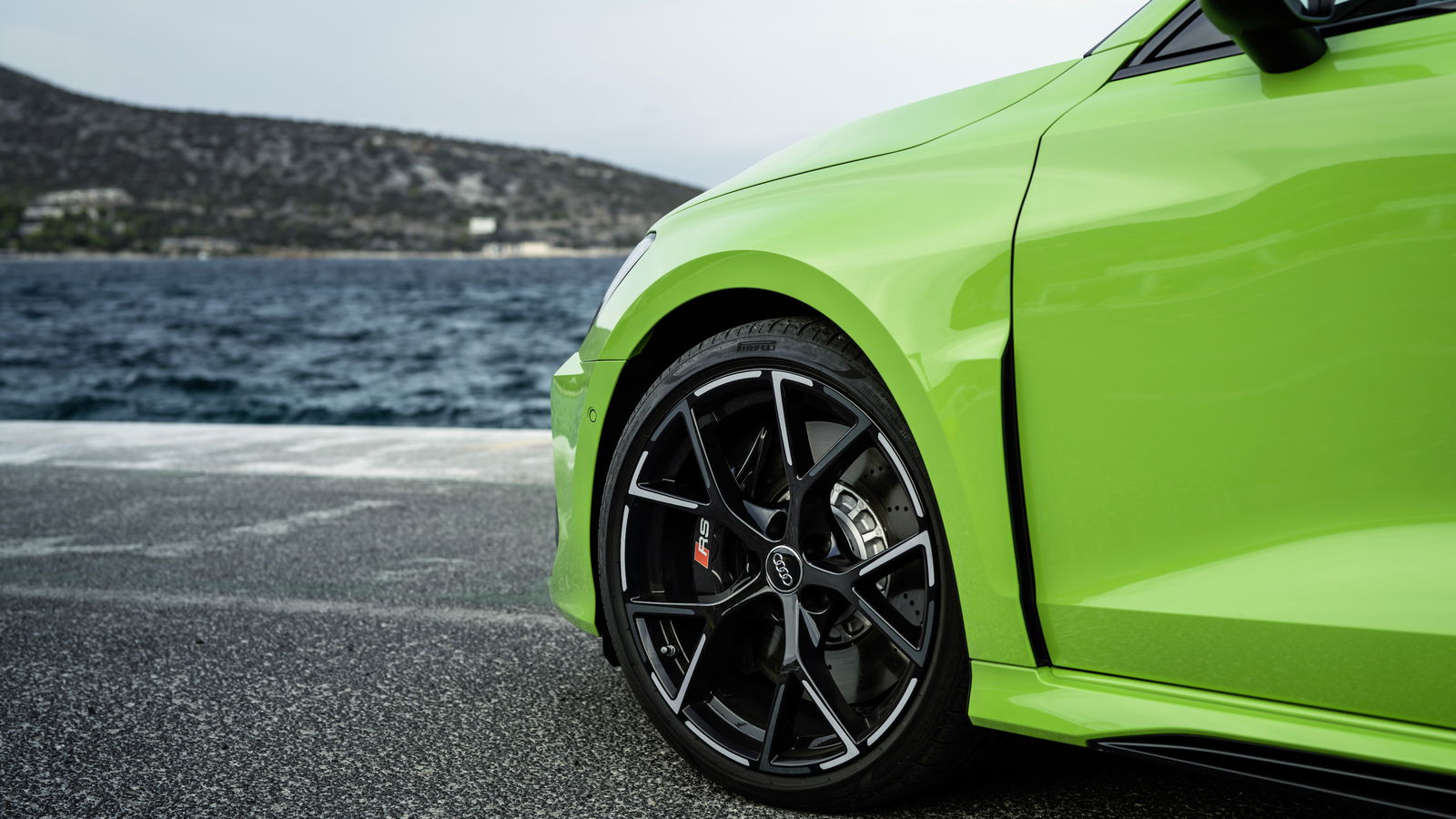
Pros
Cons
Few cars embodied the point-and-squirt nature of older Audi RS products as the original RS3 did. Astonishingly fast in a straight line with a fabulous soundtrack, it all came apart when you reached a corner, with a reputation for large dollops of understeer and a general feeling of lardiness.
The next version was better but still flawed, and when the mid-life facelift happened, bringing with it a handsome saloon version, the RS3 took a further step in the right direction thanks partly to the option of a lighter all-aluminium engine. And for the latest one, Audi Sport has hurled the kitchen sink at the car to hopefully make it the best one yet.
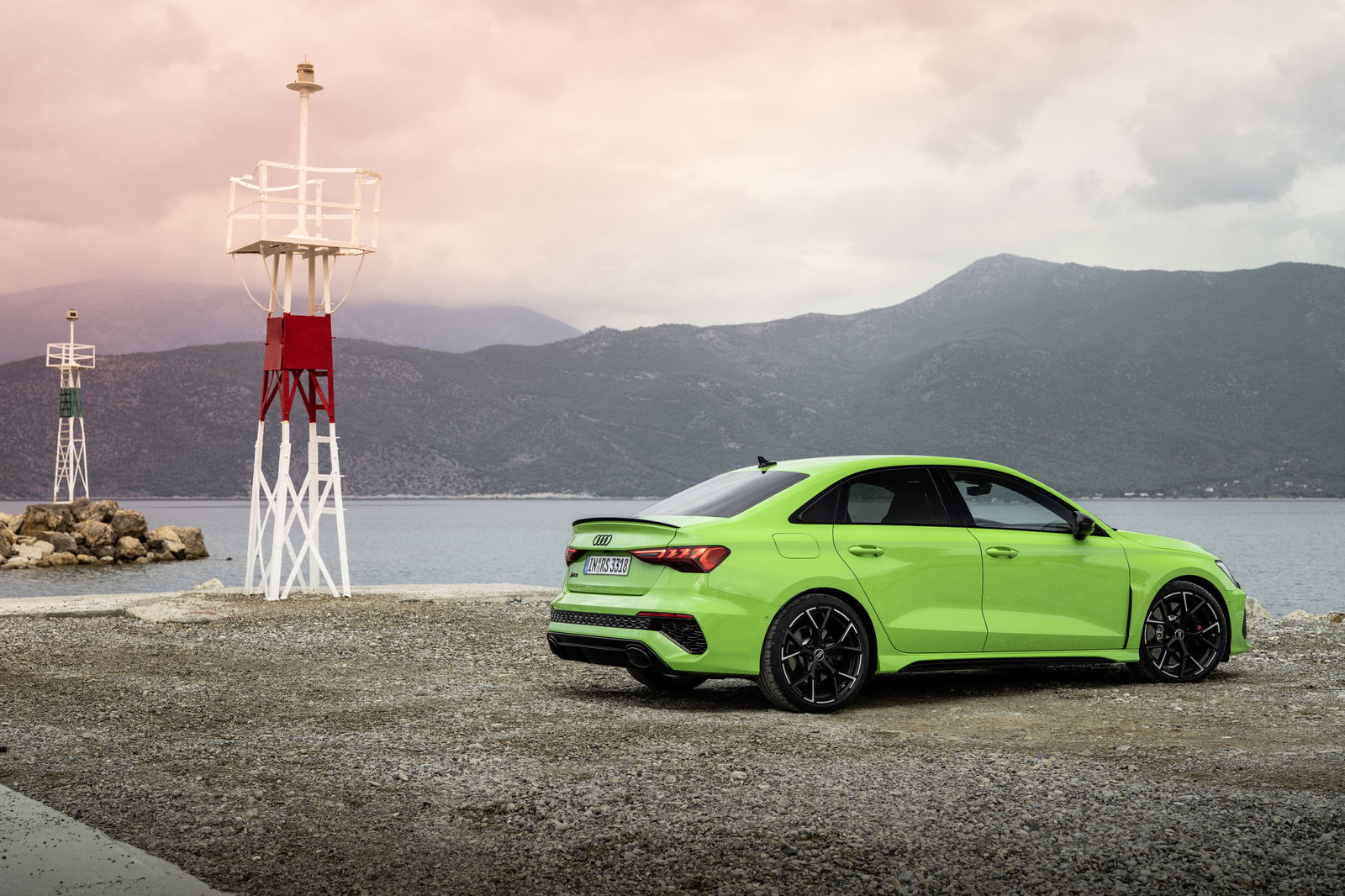
The front tracks on both the saloon and Sportback versions have grown by 33mm, with the latter widening by 10mm at the back too. There’s a bigger tyre contact patch now, with the old 235/35/19 ‘square’ setup ditched for a staggered arrangement with whopping 265s at the front and 245s at the back. The stock rubber is a set of Bridgestone Potenza S007s, but in some markets (the UK isn’t one of them) you can swap them for Pirelli P Zero Trofeo Rs semi-slicks. Serious stuff.
The brake disc diameter is up and they’re thicker, with carbon ceramics remaining on the options list. The biggest change lies far beneath, where Audi has added a ’Torque Splitter’. It’s the same part as the ‘R-Performance Torque Vectoring’ system found in the VW Golf R, but with a different calibration and extra heat shielding needed for the RS3’s exhaust layout.
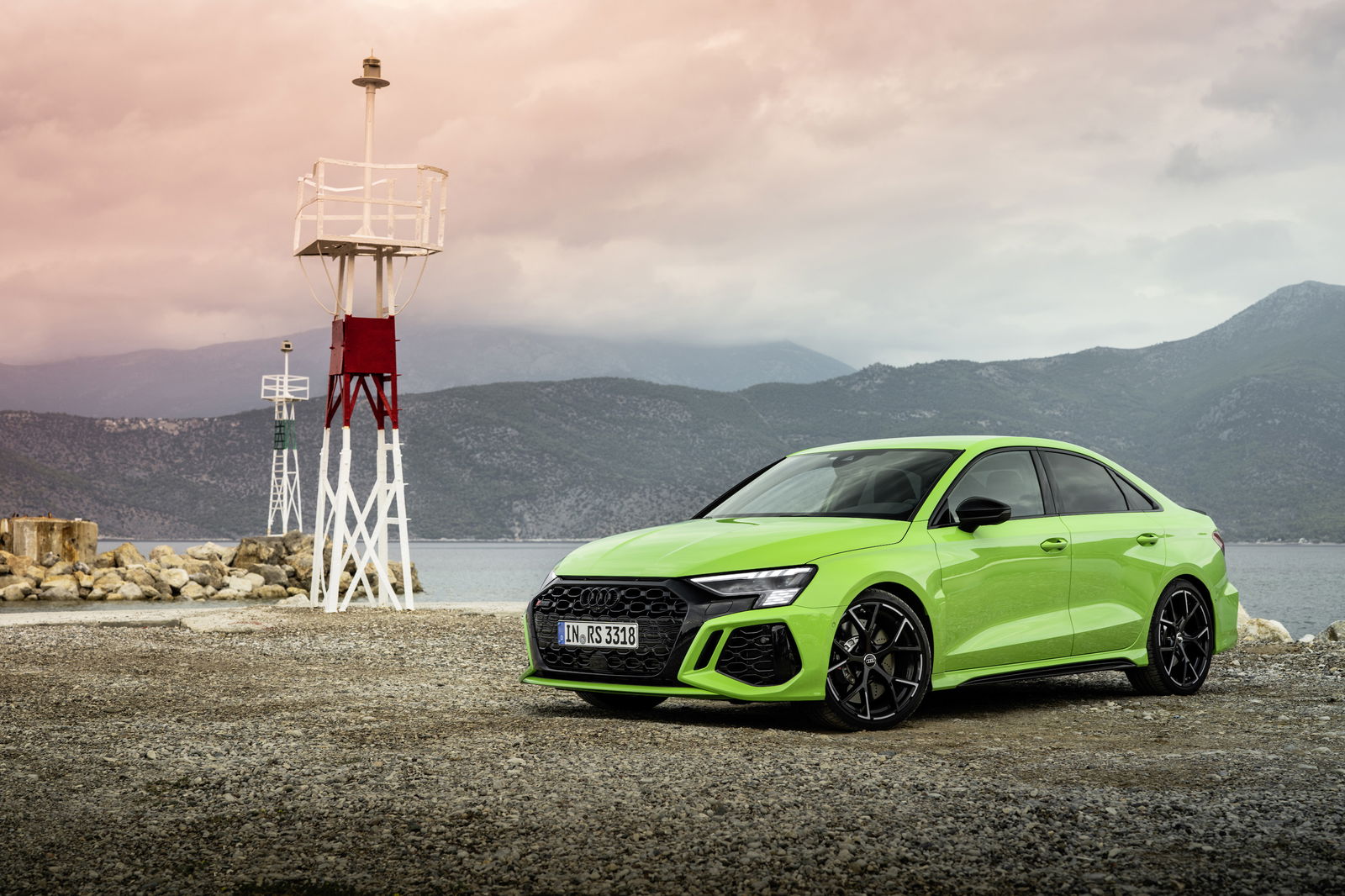
Using a pair of multi-disc clutch packs, the splitter allows for a full variation of the torque both between axles and the rear wheels. Set in ‘RS Torque rear,” up to 100 per cent can be sent to a single rear wheel, allowing for tyre-smoking drift silliness.
That’s not the main reason the Torque Splitter is here, Audi insists. It’s more about making the RS3 more agile when you’re not purposefully trying to shred the rear tyres down from the canvas (which we did have a go at doing - more on that later). The ‘drift more’ is more of a bonus, if you like.
Sure enough, this one (admittedly very complex) part of the RS3 package makes a fundamental difference to the way it drives. The old RS3 behaved in pretty much the same way during every corner - you’d get a sharp turn-in, a feeling of neutrality, and a healthy supply of traction with understeer waiting at the other side. Now, though, you can - gasps - actually feel the rear doing something.
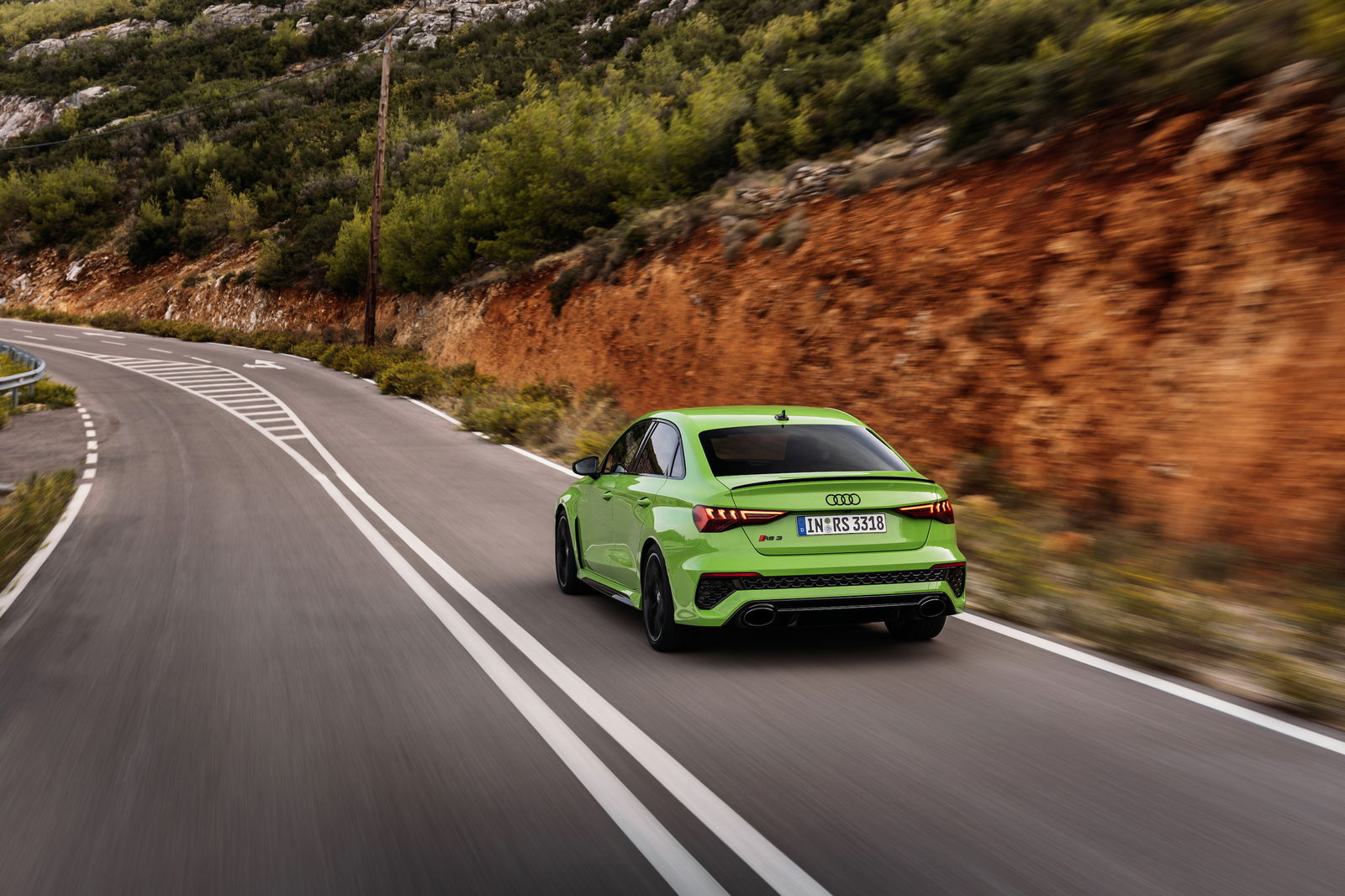
We’re not talking properly tail-happy shenanigans, but set to Dynamic, there’s a noticeable pivoting motion if you apply a decent helping of throttle mid-corner. This does wonders for the opposite end of the car, making the nose far pointier than any previous RS3. The more neutral ‘RS Performance’ mode is supposedly the quickest way to get around a track, but I’d happily trade a few tenths for additional rear bias. It’s especially good on track, where you can adjust your line mid-corner with the throttle. The old one has no interest in such things.
The adaptive suspension is too firm in Dynamic for all but the smoothest roads, so you’ll be wanting to set up ‘RS Individual’ with everything turned up to max other than the dampers. Left in comfort, there’s far more compliance and still an absence of any meaningful body roll. Audi even reckons it’s a better setting for a lot of rougher-surfaced race tracks.
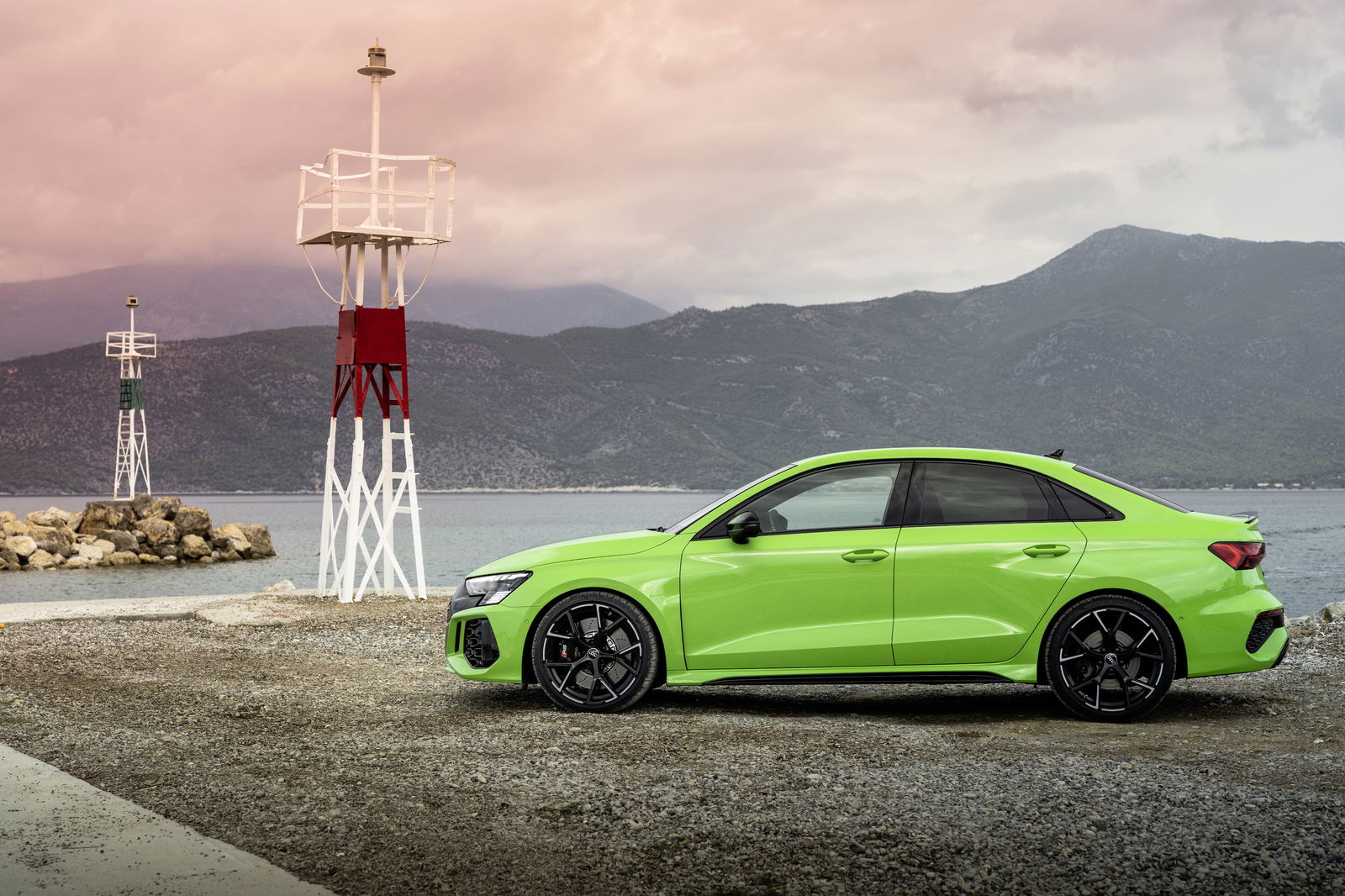
In terms of the powertrain, there’s a lot less in the way of ‘newness’ to talk about. We have the same all-aluminium inline-five as the old one with a 1-2-4-5-3 firing order retained, something Audi is so keen to point out it was even plastered all over the lightly camouflaged pre-production cars shown off a few weeks before the full reveal. The power output is unchanged at 395bhp, but the torque is up by 15lb ft to 369. Despite the identical power output, it’s three tenths faster to 62mph, doing the deed in just 3.8 seconds. Remember when we were quoting such numbers for supercars? It wasn’t that long ago.
As with the outgoing model it has a petrol particulate filter, making it sound a lot more polite than RS3s of old. The warbly soundtrack is still delicious in this more muted form, though, not to mention a relatively rare treat. While this engine’s distantly related ‘EA888’ inline-four seems to get used in everything, the five-pot is reserved for just three cars.
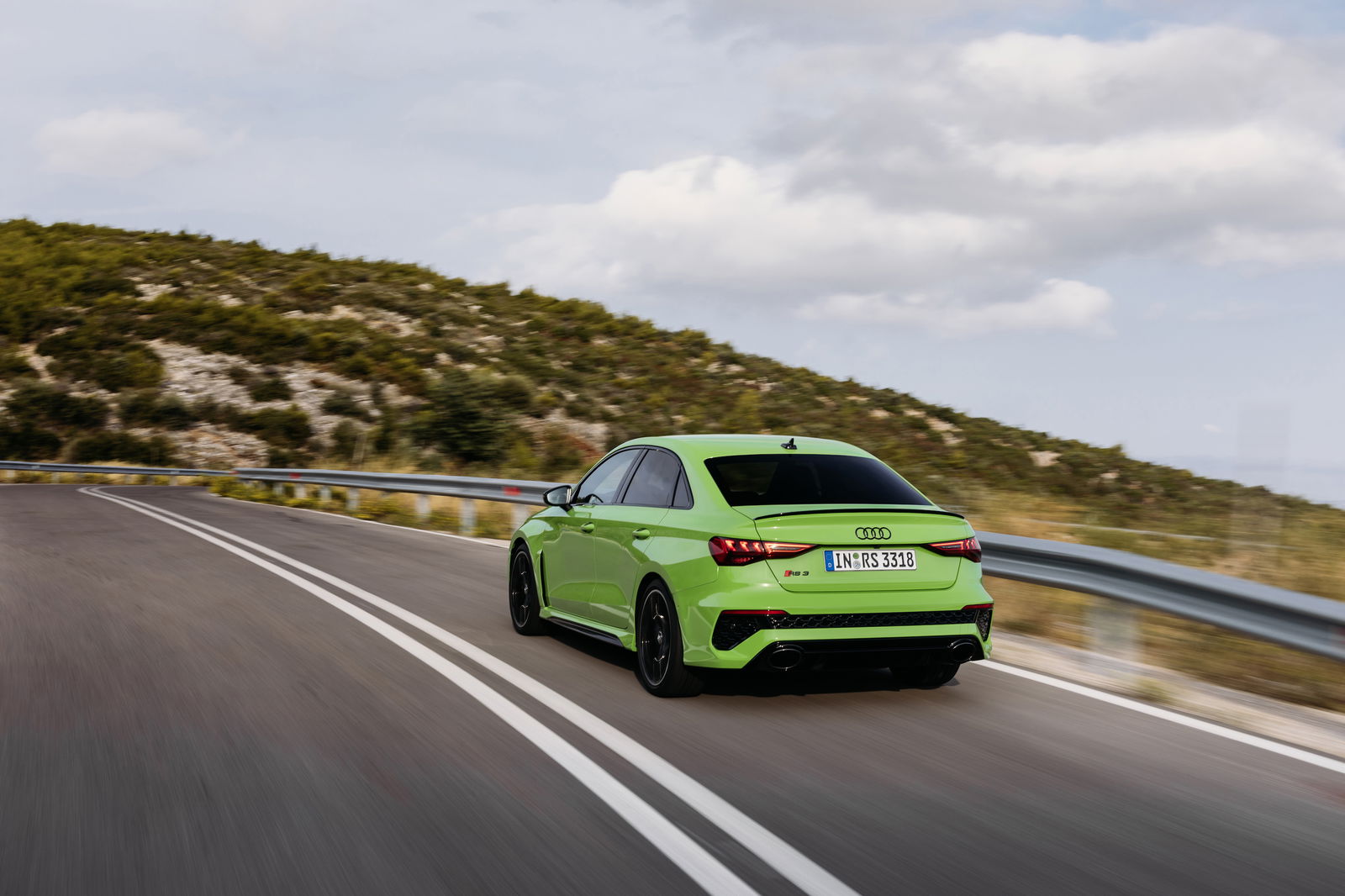
The party starts just above 3000rpm, at which point you’re presented with a beefy wave of power and torque. It doesn’t feel as outrageously fast when you put your foot down as the acceleration figure suggests it might, but it’ll impress all but the most afflicted of speed junkies. When it’s time to swap cogs, the seven-speed ‘S Tronic’ dual-clutch gearbox does so fast and effectively. You do get the occasional clunky shift from it at lower speeds though.
The powertrain is certainly punchy enough for slidey stuff to happen with ease in RS Torque rear. We were given a big bit of tarmac with two ‘drift circles’ and carte blanche to destroy a pair of S007s on the RS3’s launch in Greece, which proved to be fun, and also a bit odd. In something rear-wheel drive or a car with a conventional permanent all-wheel drive system, you’d use a decent amount of throttle to get the back end out and keep it there by feathering the throttle. Do that in the RS3, and you lose momentum until the car pretty much stops mid-skid.
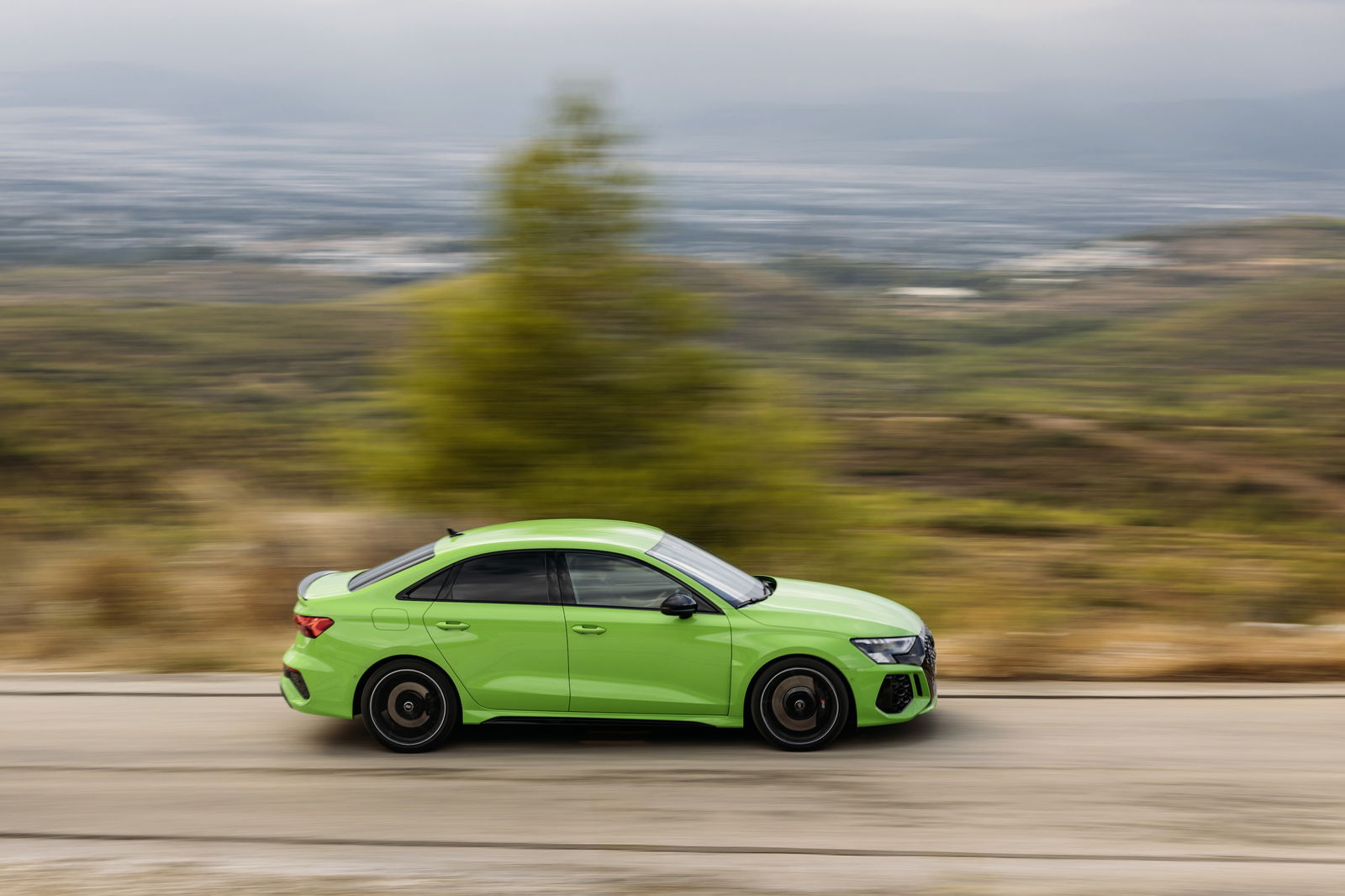
Instead, once sufficient drift angle is achieved, you have to floor it, inline-five bouncing off the rev limiter while the world outside gets smokey. Unlike using drift mode in a Focus RS, you do still need to apply opposite lock, but the whole process does feel a bit weird and unnatural. The feature is also of limited use unless you have a mate with a well-surfaced airfield or similar. But if you don’t, fun as it is, RS Torque Rear isn’t something to get FOMO over.
The RS3 is mostly very good, but there are some chinks in its armour. The steering is the main one. It’s devoid of any meaningful feedback, which is fairly common for modern cars with electric power assistance, but it would have been nice if this was made up for with more weight. As it is, the steering is too light whatever mode it’s in.
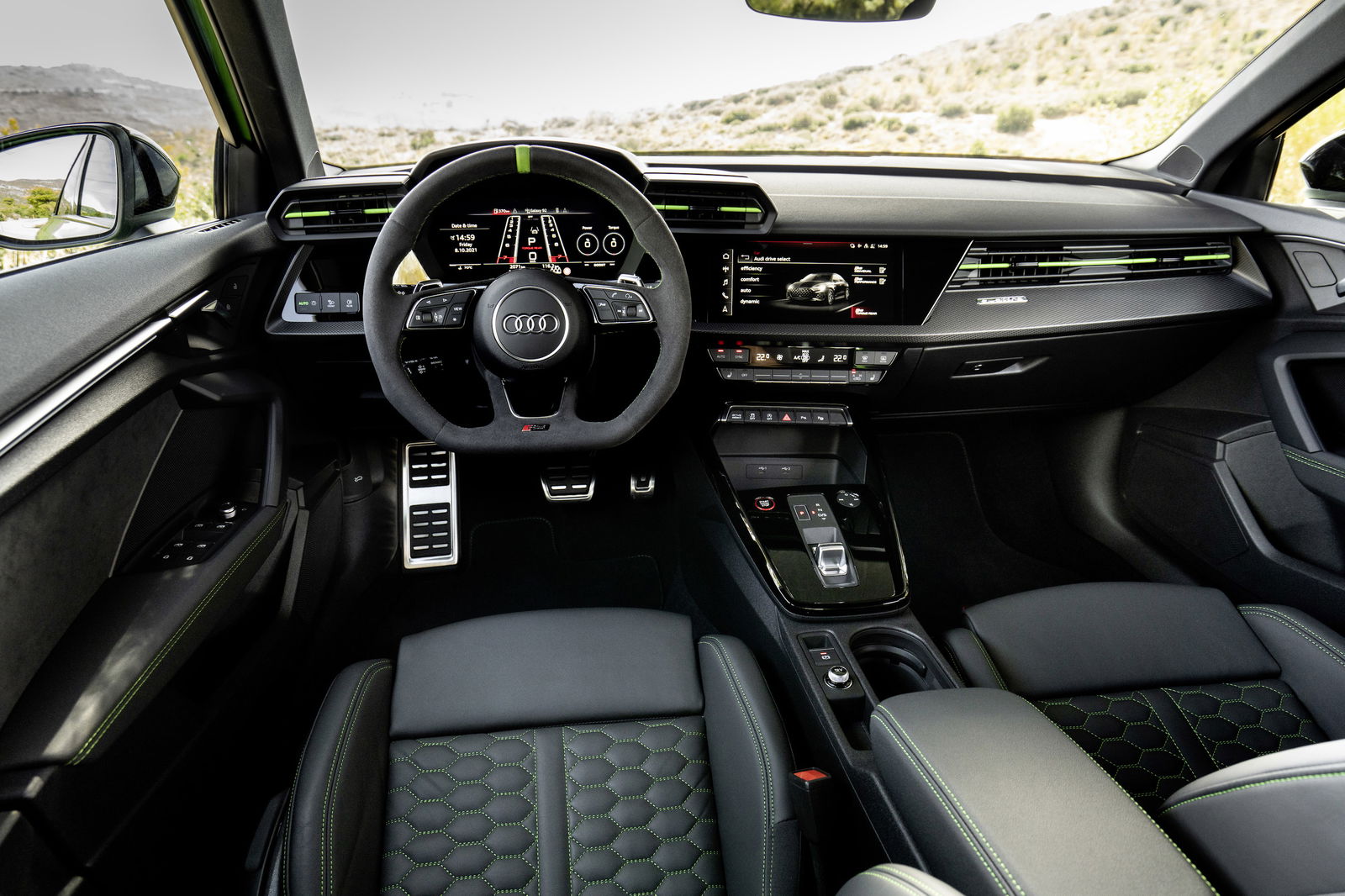
Also, even with the more playful rear, it isn’t anywhere near as involving as something rear-wheel drive like the recently departed BMW M2 Competition, or some cars with proper permanent AWD. Then again, I’m not sure the target buyer would care much. They’d be more interested in how it fares against the Mercedes-AMG A45 S and CLA 45 S.
The answer is very well. The RS3 looks better, sounds better, has a nicer power delivery, and rides more smoothly. The Merc also engages in some all-wheel drive trickery, but it often feels odd when it power oversteers. The RS3 has its moments when the all-wheel drive system doesn’t react quite as you’d expect, but on the whole, it’s the more natural-feeling setup.
With a starting price of £50,900, it’s not cheap, but neither is the Mercedes. If I blew that much on the AMG or committed to the chunky monthly payments, I’d end up questioning whether it was wise to hand over so much cash. Not so with the RS3.
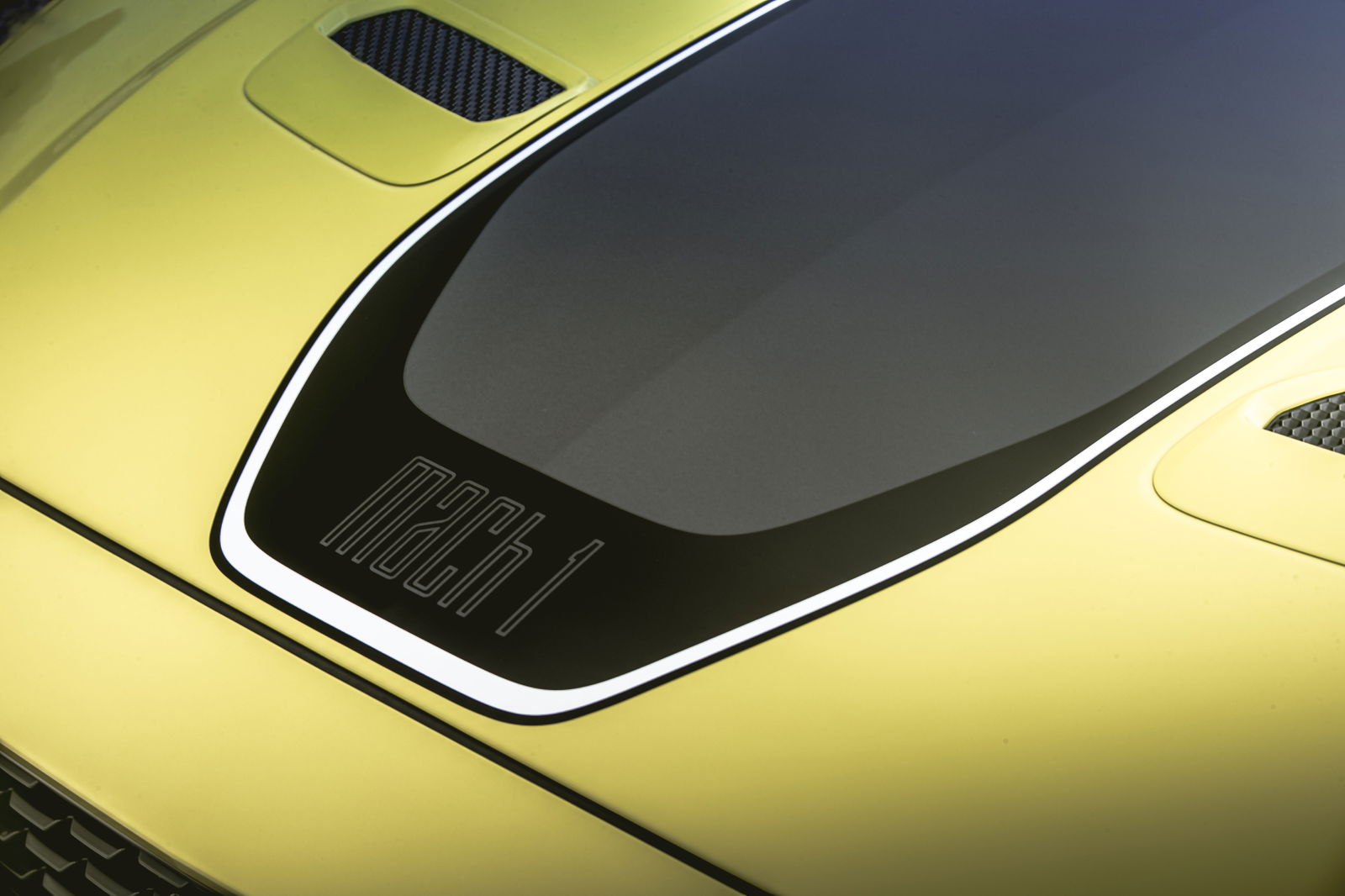
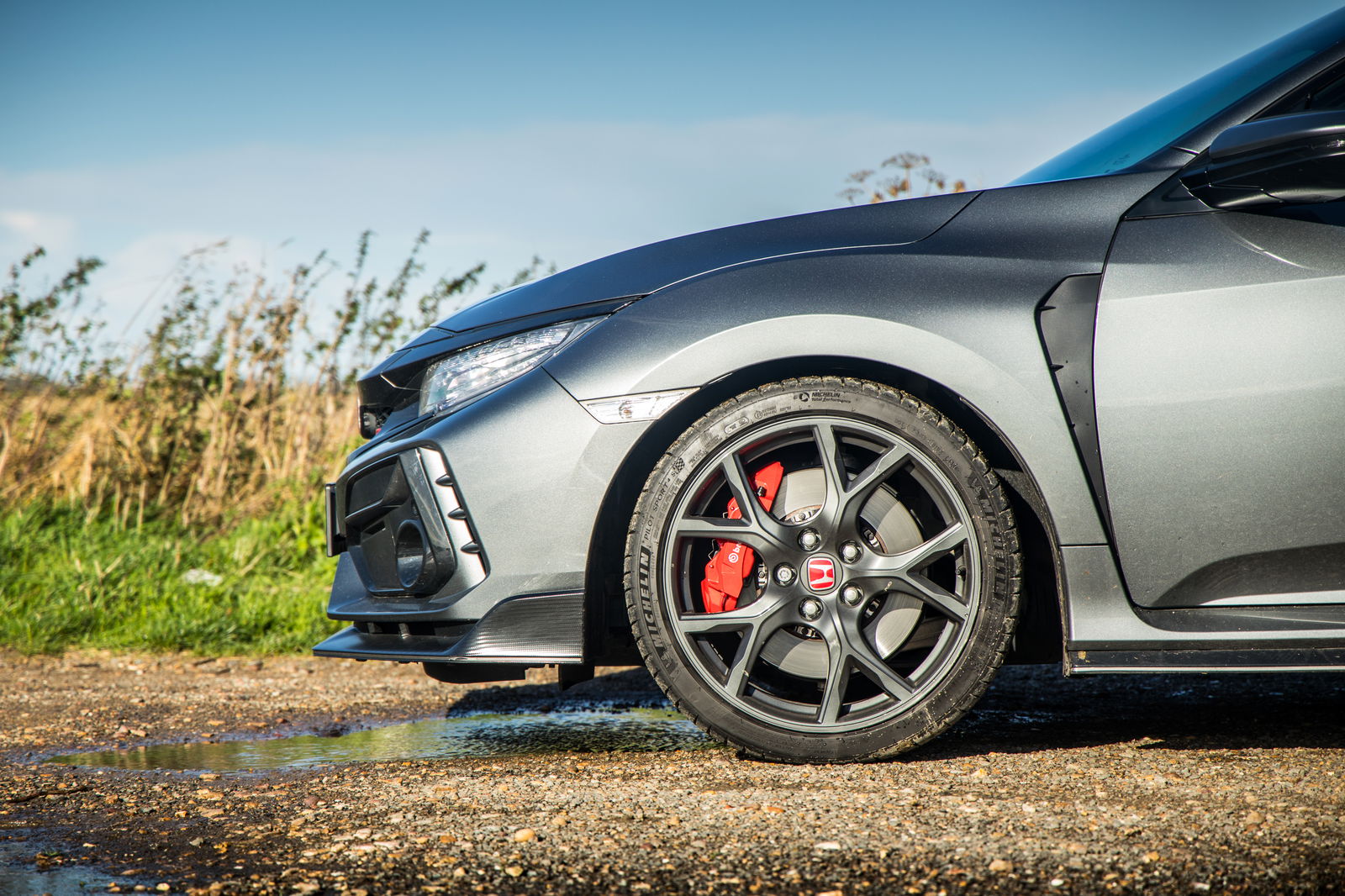

Comments